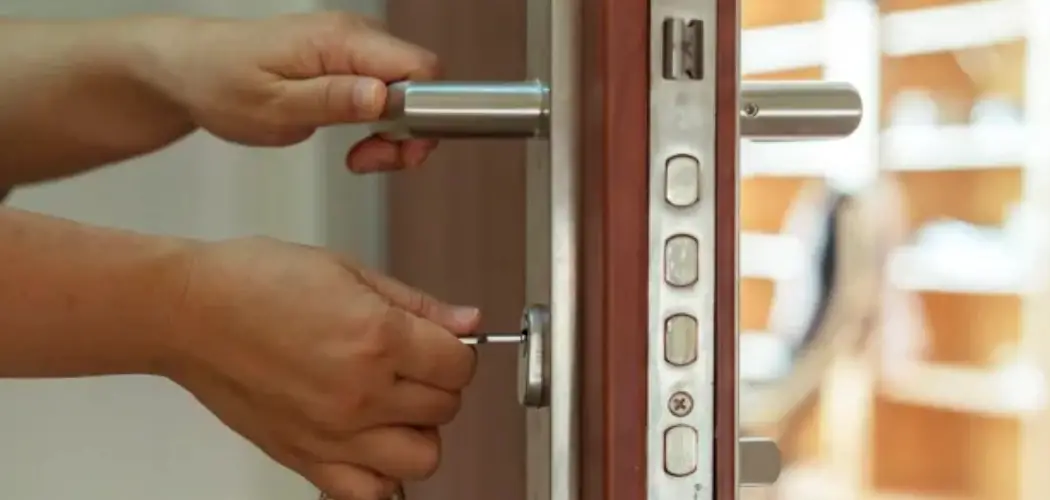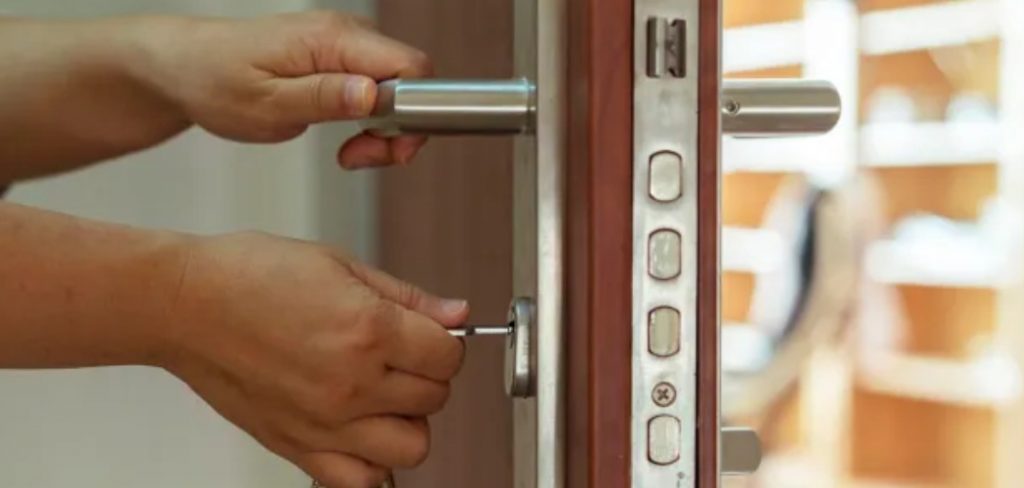
Door sensors are a fundamental component of home and commercial security systems, designed to detect whenever a door is opened or closed. These devices operate by utilizing a simple mechanism that involves two parts: a sensor and a magnet. The sensor is typically installed on the door frame, while the magnet is attached to the door itself.
Conversely, the circuit is broken when the door is opened and the magnet moves away from the sensor. This change triggers an alert, which could be in the form of a sound, light, or notification sent to a security system, thereby indicating an entry or exit event.
In this article on how do door sensors work, we will dive deeper into the different types of door sensors, their applications, and the technology behind their functioning.
Types of Door Sensors
There are several types of door sensors available in the market today. The most common ones include:
- Magnetic Contact Sensors: These are the most widely used type of door sensors, as they are affordable and easy to install. As discussed earlier, these sensors rely on the magnet and sensor mechanism to detect a door’s movement.
- Motion Sensors: These sensors use infrared technology to detect changes in heat signatures within their range. When someone passes through the sensor’s field of view, it triggers an alert.
- Pressure Mats: These are pressure-sensitive mats placed under carpets or rugs near the door. When someone steps on them, they trigger an alert.
- Glass Break Sensors: These sensors detect the sound frequency of breaking glass and can be installed on windows or glass doors.
- Smart Door Sensors: These are the more advanced version of traditional magnetic contact sensors, equipped with features such as motion detection, temperature sensing, and wireless connectivity.

These are just some of the many types of door sensors available, each with its specific applications and benefits.
What are the Benefits of Using Door Sensors?
Apart from enhancing security, door sensors offer several other benefits, such as:
- Convenience: Door sensors provide an effortless way to monitor entry and exit activity without physically checking the doors.
- Energy Efficiency: Some smart door sensors can integrate with home automation systems, allowing users to control lights and heating/cooling systems whenever a door is opened or closed. This can help reduce energy consumption and save money.
- Accessibility: Door sensors can be integrated with voice assistants, allowing people with mobility issues to easily control doors without physical contact.
With the advancement of technology, door sensors are becoming increasingly intelligent and offer a wide range of features and benefits.
What Will You Need?
If you are planning to install door sensors, here is a list of essential items that you will need:
- Door Sensors: Depending on your requirements and preferences, choose the type of door sensors that best suit your needs.
- Magnet: Make sure to have a magnet that is compatible with the chosen sensor.
- Screwdriver and Screws: These will come in handy for installing the sensors onto the door frame.
- Double-Sided Tape: If you prefer not to use screws, double-sided tape can be used as an alternative for mounting the sensors.
- Security System: Door sensors are typically connected to a security system or home automation system. Make sure to have one that is compatible with the chosen door sensor type.
With these items, you will be all set to install door sensors in your home or commercial space.
10 Easy Steps on How Do Door Sensors Work
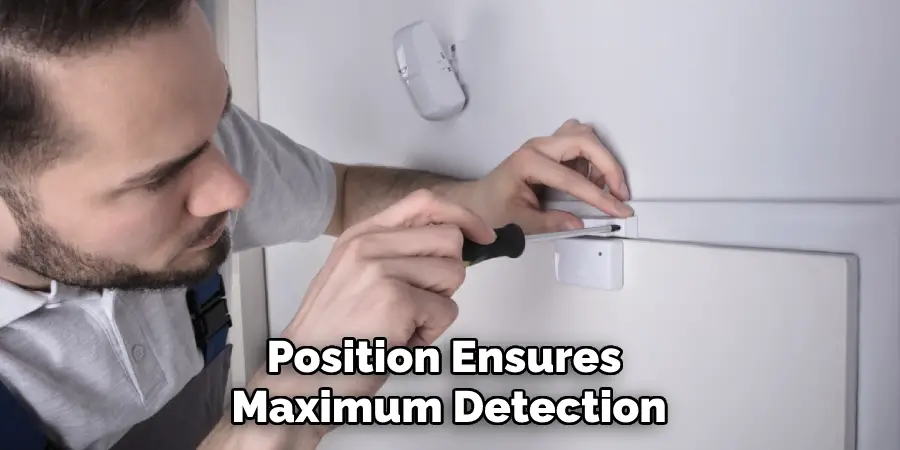
Step 1. Choose the Installation Site:
The first step in installing a door sensor is selecting the right location. Ideally, the sensor should be placed on the top corner of the door frame on the side opposite the hinge. This position ensures maximum detection capability as the door moves. For double doors, sensors should be placed on both doors to ensure comprehensive coverage.
Step 2. Prepare the Surface:
Before mounting the door sensor and magnet, it’s crucial to prepare the surface where they will be installed. This involves cleaning the area on the door and door frame to remove any dirt or grease. A clean surface ensures that the adhesive (whether tape or glue) will firmly hold the components in place over time.
If using screws, make sure the surface is smooth and ready for drilling. This step is essential for a secure installation, as any instability in the sensor’s positioning could lead to false alarms or failure to detect actual door movements.
Step 3. Mount the Sensor and Magnet:
Once the surface is prepared, the next step is to mount the sensor on the door frame and the magnet on the door itself. If using screws, position the sensor and magnet, mark the screw holes, and then drill the holes needed for mounting.
If opting for adhesive, apply the double-sided tape to the back of the sensor and magnet, ensuring they’re aligned so that the magnet faces the sensor when the door is closed. The sensor and magnet must be placed close enough so that they are in contact or within a few millimeters of each other when the door is shut to ensure the system works correctly.
Step 4. Test the Sensor Alignment:
After mounting the sensor and magnet, it’s important to test their alignment to ensure they work effectively. Close the door and check if the sensor and magnet maintain proper contact or proximity, as specified by the sensor’s manufacturer.
Open and close the door several times to observe if the sensor consistently detects the door’s movement. If there are any issues with detection, adjust the placement of the sensor or magnet until you achieve reliable functionality. This step is crucial to avoid false alarms or missed detections once the system is fully operational.
Step 5. Connect the Sensor to the Security System:
Connecting the door sensor to your home security or automation system is a crucial step. Follow the manufacturer’s instructions to properly link the sensor to the system. This usually involves activating the sensor’s pairing mode and selecting it from the system’s interface.
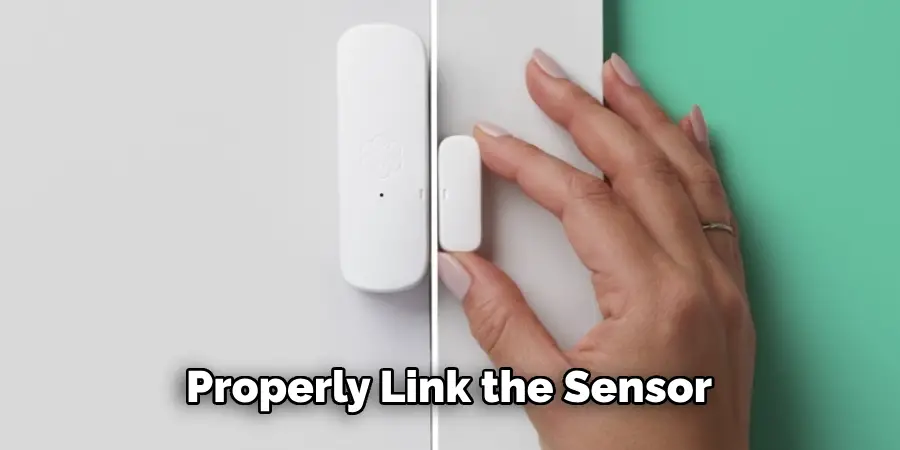
Ensure the sensor is within the required range of your system’s hub or control panel to maintain a strong connection. Testing the connectivity ensures that the sensor communicates effectively with your system, sending alerts or triggering actions whenever the door is opened or closed.
Step 6. Program the Sensor Settings:
After establishing a connection between the door sensor and your security system, the next step is to program the sensor settings. This process includes setting up alerts, notifications, and, if applicable, automation rules. For instance, you can customize the system to send you a notification whenever the door is opened or to trigger lights to turn on automatically.
It’s important to configure these settings according to your preferences and security needs, ensuring that the sensor functions in a way that enhances the safety and convenience of your environment. Remember to save your settings once you’ve completed this step to ensure all changes are applied.
Step 7. Secure the System:
With the door sensor now fully integrated into your security or automation system, it’s imperative to ensure that the system itself is secured against potential tampering or hacking. This involves setting up a secure password for your home automation or security system, enabling encryption for data transmission, and ensuring that all software is up to date with the latest security patches.
Regularly check the system and the sensor to make sure they are functioning as intended and that there are no vulnerabilities that unauthorized individuals could exploit. Taking these security measures will help protect your home or commercial space, giving you peace of mind that your premises are safe and monitored.
Step 8. Routine Maintenance Checks:
Performing routine maintenance checks is essential to ensure the door sensor continues to operate efficiently. Regularly inspect the sensor and magnet for any signs of wear or damage, and replace any components as necessary. It’s important to test the sensor’s functionality by opening and closing the door to confirm that the system accurately detects these actions.
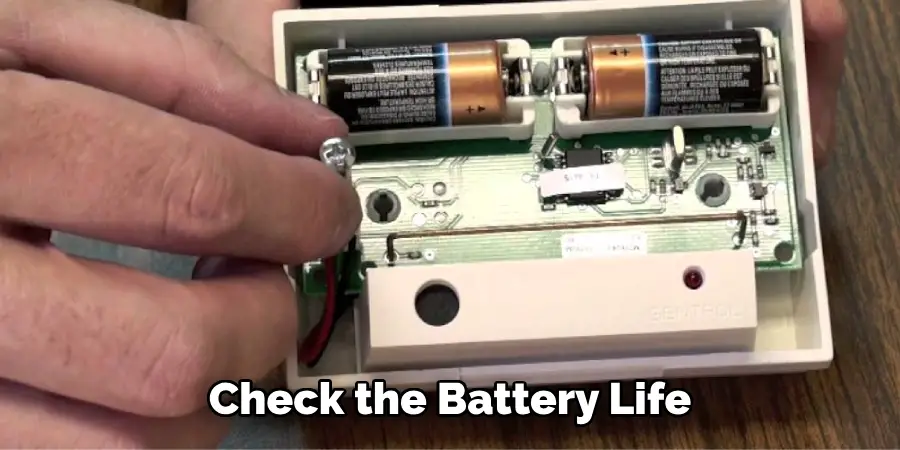
Additionally, check the battery life of the sensor regularly to see if it’s wirelessly operated, and replace the batteries as needed to avoid system failures. Setting reminders for these maintenance checks can help keep your security system in optimal condition, providing reliable protection for your property.
Step 9. Troubleshooting and Support:
If you encounter any issues with your door sensor after installation, it’s important to follow a systematic troubleshooting process. Begin by checking the basics, such as battery levels (if the sensor is wireless), the proximity and alignment of the sensor and magnet, and the integrity of the connection with the security system.
Consult the manufacturer’s manual for troubleshooting tips specific to your model. If problems persist, contact customer support for assistance. Keeping the manufacturer’s contact information handy ensures you can quickly resolve any issues. Additionally, participating in online forums or communities related to home security systems can provide valuable insights and solutions from other users who may have experienced similar challenges.
Step 10. Review and Update System Regularly:
Regularly reviewing and updating your door sensor and overall security system ensures that your home remains safe against evolving threats. This includes checking for and installing any firmware updates provided by the manufacturer, which can fix known issues and add new features.
Additionally, as your security needs change or as you add more devices to your system, reassess the placement and settings of your door sensors. Tweaking your setup can bolster your home’s security and adapt to new vulnerabilities. Finally, consider conducting a full system audit annually, involving a professional security assessment to identify any potential weaknesses in your home security setup.
By following these steps, you can successfully install a door sensor and integrate it into your security system, providing reliable protection for your property.
5 Additional Tips and Tricks
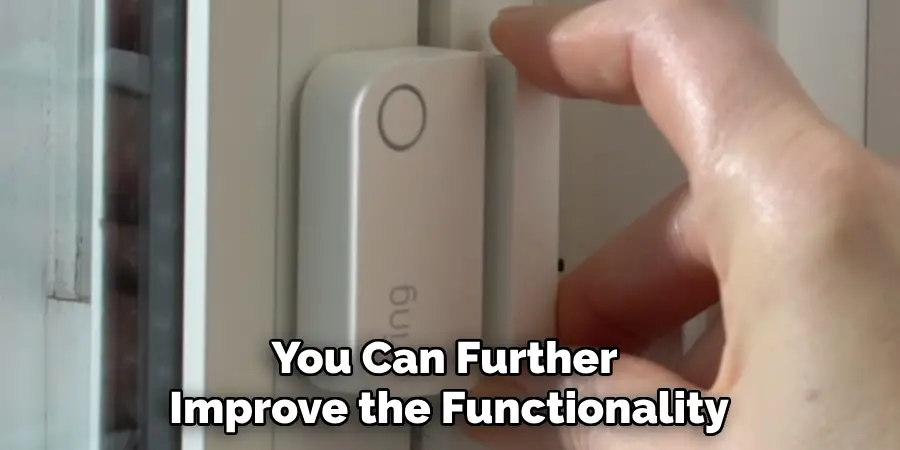
- Placement is Key: Ensure door sensors are placed in the optimal location, typically at the top corner of the door, to accurately detect openings and closings. This position minimizes false alarms and enhances the sensor’s effectiveness.
- Understand Sensor Types: Familiarize yourself with the types of door sensors available, such as magnetic, vibration, or infrared. Knowing how each type works can help you choose the best one for your needs and troubleshoot any issues.
- Test Your Sensors: Regularly test door sensors to ensure they are working as expected. This can often be done through your security system’s control panel. Testing helps identify any problems early, preventing security lapses.
- Consider Pet Sensitivity: If you have pets, consider the sensitivity of your door sensors. Some sensors can be adjusted to ignore movements at ground level, preventing false alarms triggered by pets moving around your home.
- Think About Battery Life: Door sensors are battery-operated, so it’s important to monitor and replace batteries as needed. Some sensors also have low-battery indicators to alert you when they need to be changed. Regularly checking and replacing batteries can prevent the sensor from failing at a critical time.
With these additional tips and tricks, you can further improve the functionality and reliability of your door sensors.
5 Things You Should Avoid
- Do Not Install Sensors in Extreme Temperatures: Placing sensors in areas subject to extreme cold or heat can impact their functionality. Most sensors have operating temperature ranges; exceeding these limits can cause damage or reduce sensitivity.
- Avoid Blocking the Sensors: Ensure nothing obstructs the path between the sensor and its corresponding magnet or receiver. Physical barriers can prevent the sensor from detecting door movements accurately, leading to security breaches.
- Don’t Use Low-Quality Batteries: Opting for cheaper, low-quality batteries can lead to shorter battery life and unreliable sensor performance. Always choose high-quality or manufacturer-recommended batteries to ensure consistent functionality.
- Don’t Forget to Sync Sensors with Your Security System: After installation or battery replacement, make sure to sync the sensors with your home security system. Unsynchronized sensors may not communicate door openings or closings to the control panel, compromising your home’s security.
- Avoid Ignoring Maintenance Alerts: Many modern sensors send maintenance alerts or indicators for issues such as low battery or connectivity problems. Ignoring these alerts can lead to failures in detecting intrusions or other critical events.
By steering clear of these common pitfalls, you can maintain the optimal performance of your door sensors and ensure your home remains secure.
Does the Door Sensor Need Power?

Yes, door sensors require power to function. Most door sensors are battery-operated and use low-voltage batteries such as AA or AAA. Some sensors may also be powered by AC electricity through a wired connection to your home’s electrical system. It is essential to regularly check and replace the batteries of your door sensors to ensure they have enough power to function correctly.
Additionally, wired door sensors may require professional installation to connect them to your home’s electrical system. Before attempting to install wired sensors yourself, it’s important to refer to the manufacturer’s instructions or consult a professional.
What Can Damage Door Sensors?
There are several things that can damage door sensors and impact their functionality, including:
- Water Damage: Excessive exposure to moisture or water can damage door sensors, rendering them ineffective. It’s important to ensure your sensors are installed in areas protected from rain or splashing water.
- Physical Damage: Door sensors can be damaged if they are hit or moved, causing misalignment or disconnection from their corresponding magnet. Avoid placing objects near the sensors that could accidentally damage them.
- Electromagnetic Interference: Certain electronic devices, such as microwaves, cordless phones, and Wi-Fi routers, can interfere with the signals of wireless door sensors, leading to false alarms or failures to detect openings or closings. It’s best to place your sensors away from these types of devices.
- Extreme Temperatures: As mentioned earlier, extreme temperatures can also damage door sensors, affecting their functionality and battery life. Avoid placing sensors in areas subject to extreme cold or heat.
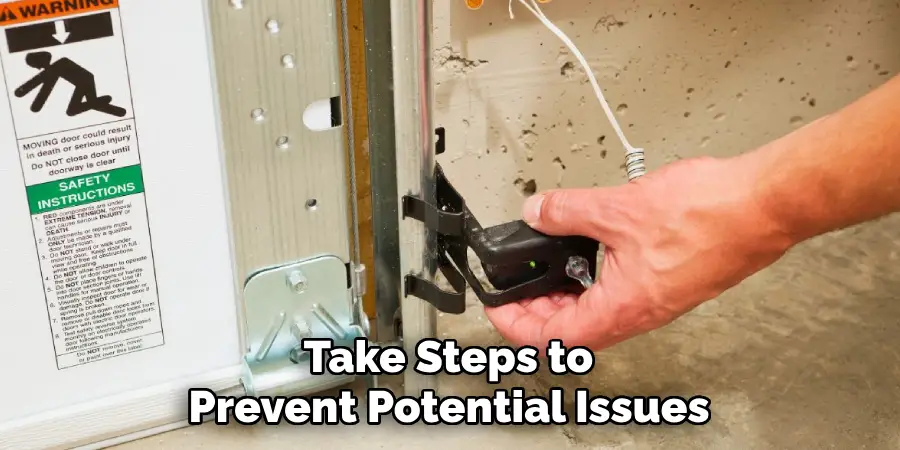
By understanding what can damage door sensors, you can take steps to prevent potential issues and maintain the effectiveness of your security system.
Can You Fix a Door Sensor?
Yes, in some cases, you can fix a door sensor yourself. If the issue is related to battery life or connectivity problems, replacing the batteries or troubleshooting any connection issues may resolve the problem.
However, if there is physical damage or malfunctioning components, it may be best to contact the manufacturer for assistance or replace the sensor altogether. It’s important to regularly test and maintain your sensors to identify any issues early on and prevent them from compromising your home’s security. So, it is always recommended to keep a spare sensor for replacement in case of emergencies.
Conclusion
Understanding how do door sensors work is crucial for maintaining the security and safety of your home. These devices play an essential role by alerting you to any unauthorized door openings or closings, thereby acting as a first line of defense against potential intruders. Door sensors operate based on simple yet effective principles of physics involving magnetism and circuitry to detect movements.
You can ensure that these sensors function optimally by properly installing, maintaining, and avoiding common pitfalls. Remember, the effectiveness of a door sensor largely depends on its installation location, maintenance, and the quality of its components. Ensuring regular checks and promptly addressing any issues can help maximize the security benefits that door sensors provide.
Whether you opt for wired or battery-operated sensors, understanding their operation, maintenance needs, and potential vulnerabilities can help you make informed decisions to protect your home effectively.

